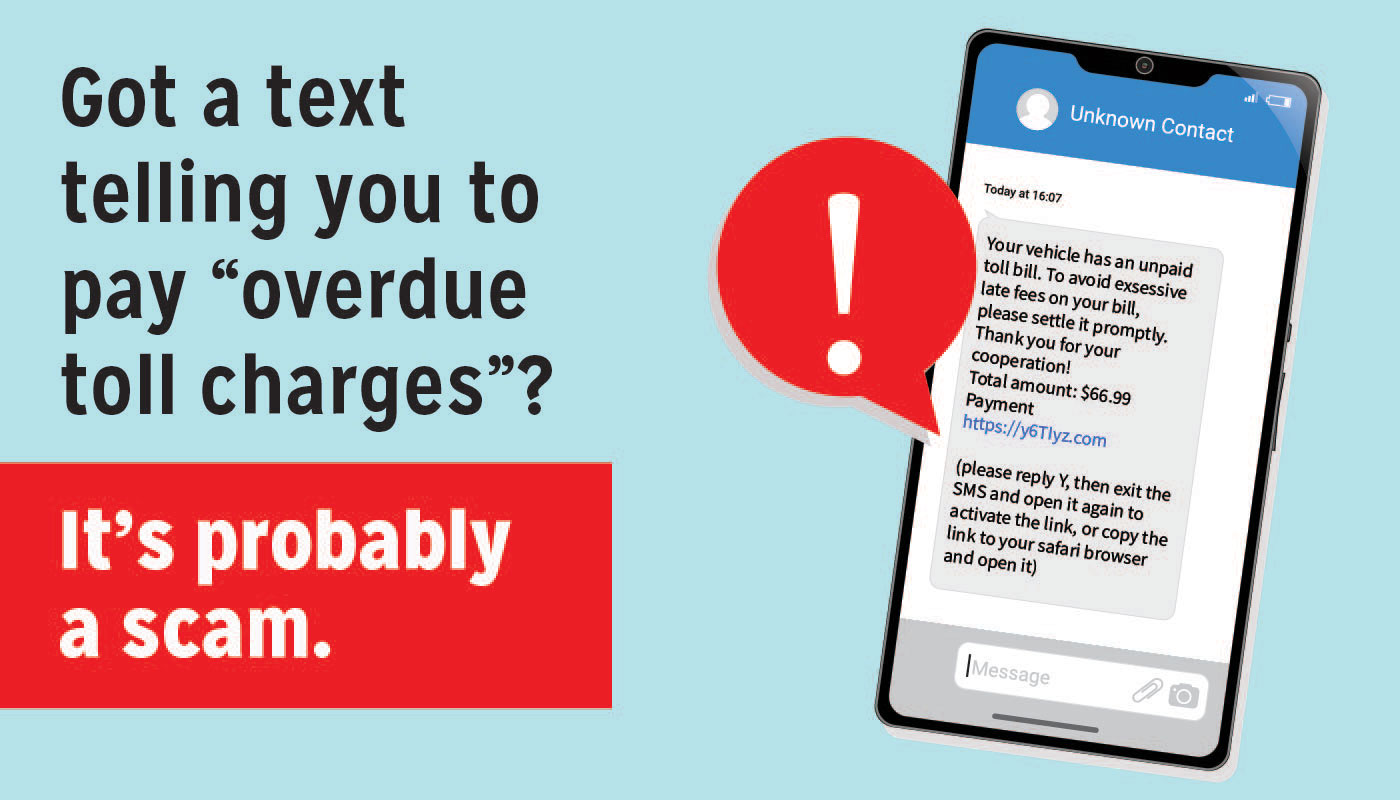To ensure you receive the best service possible,
please enter your zip code below:

Text scams are on the rise, and one of the latest tactics focuses on drivers. These fraudulent schemes use "unpaid toll" notifications to trick unsuspecting recipients into sharing personal information or making payments. States across the U.S. have reported an uptick in these scams. Here's everything you need to know about these toll invoice text scams to protect yourself and your loved ones.
Toll invoice text scams operate by preying on the sense of urgency and authority tied to official toll agencies. Scammers send messages claiming to represent toll operators like SunPass in Florida or referencing unpaid tolls in other states such as Indiana, Pennsylvania, or California. These texts often allege that the recipient has unpaid tolls and threaten fines or additional penalties if payment is not made immediately.
These scams can appear shockingly authentic, making it easy for even cautious drivers to fall for them.

Check out our video above for more on toll invoice text scams.
Staying vigilant is your first line of defense against these toll invoice text scams. Knowing the common characteristics of scam messages allows you to quickly identify and avoid falling victim.
Here are some common red flags to watch out for:
For example, the SunPass toll scam has recently become more common in Florida. Drivers should avoid clicking links in unexpected texts claiming to be from SunPass or similar agencies.
Learn how to protect yourself from AI scams with our guide. Stay informed and secure your personal information.
Find out moreThe most reliable way to verify a toll communication is by bypassing the text altogether. Consulting official channels can quickly confirm whether you have unpaid toll charges.
Here’s how to check a toll communication’s authenticity
If you suspect a scam, avoid engaging with the text altogether. Never click on suspicious links or provide personal details.

Defending against text toll scams doesn't have to be complicated. Adopting essential cybersecurity habits and taking advantage of AAA membership benefits can reduce your risk of falling victim.
If you're an AAA member, you can take full advantage of their ProtectMyID service offered through Experian. This feature monitors your financial activity and alerts you regarding your credit usage and limits.

Reporting toll text scams to the appropriate authorities protects you and helps address the broader scam epidemic. Here’s how you can do your part in stopping these scams:
For AAA Members, the ProtectMyID program can also guide you if your information has been compromised.
Toll invoice text scams are just one of many cyber threats targeting drivers today. By staying informed and cautious, you can keep yourself—and your personal information—safe from harm.
Share this information with friends, family, and fellow drivers to help them stay vigilant. Remember, awareness is key to stopping these scams in their tracks and ensuring the safety of your online and financial information.
If you’re a AAA Member, use tools like ProtectMyID to enhance your security. AAA is here for you on the road and the digital highway. Together, we can outsmart scammers and protect our communities!
Want to be protected?
AAA Members can click the link below to start using Experian to protect themselves online. Not a AAA Member? Join today to unlock exclusive savings like this and more.